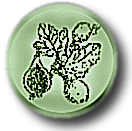Subsystem: Threonine degradation
This subsystem's description is:
Threonine can be degraded to several compounds: glycine, acetaldehyde, oxobutanoate. These pathways are combined in the subsystem
For more information, please check out the description and the additional notes tabs, below
| Diagram | Functional Roles | Subsystem Spreadsheet | Description | Additional Notes | Scenarios | |||||||||||||||||||||||||||
no subsystem diagram available for this subsystem
Threonine can be degraded to several compounds: glycine, acetaldehyde, oxobutanoate. These pathways are combined in the subsystem Overview: Understanding of the pathway of threonine degradation towards glycine can be used to control and improve acetaldehyde production in fermented (dairy) products as acetaldehyde is the second co-product of threonine degradation by this route.L-Threonine acetaldehyde-lyase (threonine aldolase, TA) is a pyridoxal-5'-phosphate-dependent (PLP) enzyme that catalyzes conversion of L-threonine or L-allo-threonine to glycine and acetaldehyde in a secondary glycine biosynthetic pathway. Variation in the threonine binding pocket may explain preferences for L-allo-threonine versus L-threonine among TA family members (Biochemistry. 2002 Oct 1;41(39):11711-20). Serine hydroxymethyltransferase, a pyridoxal phosphate-dependent enzyme, catalyses the interconversion of serine and glycine, both of which are major sources of one-carbon units necessary for the synthesis of purine, thymidylate, methionine, and so on. Threonine aldolase catalyzes the pyridoxal phosphate-dependent, reversible reaction between threonine and acetaldehyde plus glycine. No extensive studies have been carried out on threonine aldolase in animal tissues, and it has long been believed that serine hydroxymethyltransferase and threonine aldolase are the same, i.e. one entity. This is based on the finding that rabbit liver serine hydroxymethyltransferase possesses some threonine aldolase activity. Recently, however, many kinds of threonine aldolase and corresponding genes were isolated from micro-organisms, and these enzymes were shown to be distinct from serine hydroxymethyltransferase. The experiments with isolated hepatocytes and cell-free extracts from various animals revealed that threonine is degraded mainly through the pathway initiated by threonine 3-dehydrogenase, and there is little or no contribution by threonine aldolase. Thus, although serine hydroxymethyltransferase from some mammalian livers exhibits a low threonine aldolase activity, the two enzymes are distinct from each other and mammals lack the "genuine" threonine aldolase (Int J Biochem Cell Biol. 2000 Mar;32(3):289-301). The pathway of threonine degradation towards oxobutanoate actually leads to byosinthesis of branched chain amino acids and has a biosynthetic (or amino acid salvage) significance. Please, use listed subsets of roles to see how different pathways of threonine degradation are represented in different organisms. Useful references: http://www.pubmedcentral.gov/articlerender.fcgi?tool=pubmed&pubmedid=6413491 http://www.pubmedcentral.gov/articlerender.fcgi?tool=pubmed&pubmedid=355220 Variant code: 1.x-Pathway for Threonine Degradation towards glycine is present 2.x-Pathways for Threonine Degradation towards glycine and methylglyoxal are present 3-Only Threonine Degradation towards aminoacetate is posible 4-Only Threonine Degradation by Threonine dehydratase towards oxobutanoate is possible 5-Pathways for Threonine Degradation towards glycine and oxobutanoate (1 and 4 combination)are possible 6-Pathways for Threonine Degradation towards glycine, methylglyoxal and oxobutanoate (2,4) 7-Pathways for Threonine Degradation towards aminoacetate and oxobutanoate are possible Currently selected organism: Anabaena variabilis ATCC 29413 (open scenarios overview page for organism)

| ||||||||||||||||||||||||||||||||




